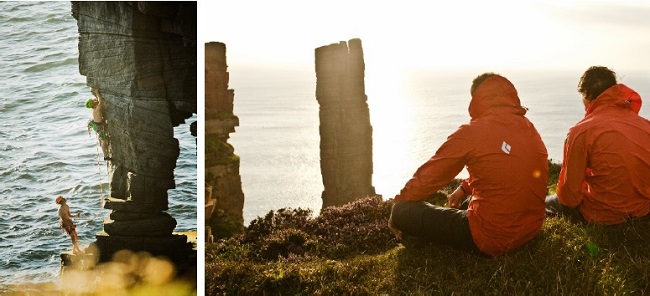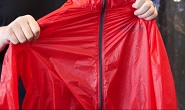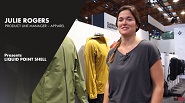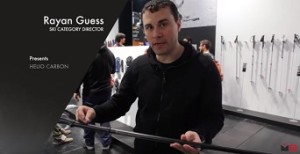
In August 2016 a team of German climbers visited Hoy. The group consisted of one of the best photographers and filmmakers of the German climbing scene, Nico Altmaier of VerticalAxis, Thomas ‘Shorty’ Tauporn with his wife Selina and Markus Urbanowski. Here, Markus writes of adventurous sea cliff climbing on Orkney from a German perspective…
After 19 hours by car, plane and ferry, we finally arrived on Mainland – the largest of the Orkney Islands. Incredibly, for the same time and cost we could have quite comfortably flown to Miami Beach, but we didn’t want to go there! After a trip to the Peak District in 2014 and the Scottish Hebrides last year, we wanted to climb the Old Man Of Hoy.
Early in the morning, we went by ferry to the island of Hoy, known for its ‘Old Man’, probably the most famous sea stack on the Scottish coast. We pitched our basecamp in Rackwick, on the Hoy coastline.In the first few days, Hoy greeted us with a lot of sunshine and a light breeze – perfect conditions to get used to the climbing and peculiarities of the area.
The climbs and descents were more complicated than those we experienced in the Hebrides. During our last trip, we rarely had to gather or dig rocks to descend over the cliffs. Keen to get going, we drove to the sea and climbed the first easy routes we could reach. On the Orkney islands as with the Hebrides, the routes are climbed exclusively in traditional style.
Cams of all sizes and shapes, slings, nuts, microstoppers, helmets and nerves of steel are always a necessity. Of course, in the most difficult sections, the required cam, nut or microstopper has always already been placed a few metres below or is incorporated into the belay – then the nerves and forearms are really in demand. We know what to expect, but for us it’s our third year in a row in Britain – we are actively looking for these situations, even if at the same time we end up cursing for putting ourselves in such testing scenarios.
Between Rackwick and the Old Man of Hoy, a stream crashed over the cliffs into the sea and we discovered a route right next to it. I racked up and got stuck in to this new line. Beautiful, slightly overhanging climbing on good jugs. The last quarter of the route was interrupted by a wet grass band with a spitting fulmar. This was the first time we had had to deal with these animals while climbing and we were warmly greeted with half-digested fish. Shorty repeated the route and I gave it the name Hitchcock, E3 6a.
The next day we would take on the Old Man of Hoy. However, the route we had originally planned – the Original Route – was already occupied by a team. One of the climbers was hanging freely in an overhang and wasn’t moving upwards. For over an hour, his partners tried to get him up to the second belay. We opted for the route A Few Dollars More across the northern side of the Old Man.
A steep slope with an upholstery of wet grass lead us down, similar to those on the very bold classics of the Allgäu region in southern Germany. One wrong-footing or a slip on loose earth and you would fall the remaining distance down the cliffs. The route was slightly sandy with a few seagulls, but standing safely on the belay watching the sea lions swimming and diving calmed the nerves again for the next pitch. One ropelength from the summit, we reached the party on the Original Route – two guys from Sheffield, who had eventually brought their father (beer belly, > 120kg) up onto the summit using every trick in the book over eight hours. With loud laughter, one of the sons claims that his father has never used a harness before and hence didn’t realise the need for a chest harness. Instead, they had strapped him in a normal waist harness around the shoulders. Up he went with a jumar. I couldn’t believe it, especially since the wind was getting fresher. As the father-son party was blocking the abseil, we had to spend almost two hours on top of the Old Man. The wind had grown so strong that we couldn’t hear ourselves speak and we just wanted to go down. We spoke to the English guy and set up a descent.
The result was that we had to wait another hour in the grassy gully until the guys came over. The last 60 metres were overhanging and the father hung horizontally until banana-shaped in his harness construction. You didn’t know whether to laugh or cry. Ten feet above the ground, a rope that one of the two sons was using as a backup from above, wrapped itself around the rigid stem of a cam. With every inch the father abseiled, the cam kept digging into the son’s shinbone. He screamed like a pig and we couldn’t help from the ground. Somehow he managed to free himself and the father landed between the breaking surfs below. Back at the entrance we waited until the three guys had mastered the grass slope and looked forward to our well-deserved beer!
The next day we drove to the south of Hoy. Our goal was the Needle – a 60 metre high swaying pin in the sea, which has probably not been repeated since 1990. On the south-west coast of Hoy we followed the road through the moorland. Scruffy sheep and attacking robbers – the Bonxies – accompanied us along the way. After two hours of painstaking approach, we saw the Needle appearing off the coast and we were already preparing for the swim. According to the the first ascensionist description by Mick Fowler and his team, we should first abseil 60m below onto a deep platform and then swim to the start. The abseil stance, however, was just a rusted old tent peg in the steep grass of the cliff. One wrong step and we would have taken a more direct descent. The Needle itself was populated by countless seagulls and did not look very inviting judging by the rock quality either – after an hour of arguing for and against, we decided against the ascent of the Needle. No lump of rock in the world is worth taking too high a risk. The mood wasn’t pleasant, a stupidly long approach and then no climbing – crap! The alternative route also turned out to be not at all worthwhile.
Rest day: There was no wind, it was cloudy and yet we still couldn’t get ourselves out the door. The infamous midges had the island under control. Luckily we had a cottage with a fridge and a kitchen, so we could drink all day, sleep, cook, drink, eat, read, drink.
Still without wind, we decided to go back to the Old Man the next day – since Shorty’s wife Selina and Nico our photographer also deserved to get the chance to summit this landmark of the Orkney islands.
As our equipment was in limited supply, Shorty stayed “on land” and I brought up the other two. This time on the Original Route and in the best weather, with whales and dolphins swimming along the coast – a paradise setting.
We left Hoy and returned to the Mainland: direct to Yesnaby, back to the wild west coast and to our last sea stack, the famous Castle of Yesnaby. We expected the hottest day of this year’s Scottish summer, no cloud in the sky, perfect conditions. We arrived at high tide and the sea was too wild to even think about swimming to the Castle.
The cliffs and routes around it looked so spectacular that it did not take long for me to abseil over the cliffs with my gear. The starting point was in or just above the water and we got wet climbing shoes and trousers. The fact that the seals were now bobbing almost at eye level made the experience extra exciting.
The routes we climbed here became our hardest of the whole trip. The best rock quality so far combined with our intense motivation to give it our all again today, resulted in our hardest route yet on the British Isles: Dragonhead, E6 6b on our first attempt. In our eagerness to climb we noticed late in the afternoon that it was now low tide and that the sea had calmed down. We had a two-hour window for the Castle. If we wanted to climb it this year, we had to climb it ‘quick & dirty’. That meant for us: no Tyrolean, no change of clothes, no towel, no dry equipment, no chalk. Both of us would swim to the entrance, get out of the water, briefly let the wind dry us and then climb up. A pleasure that is rarely possible – conditions just like Majorca deep water soloing – only with Camalots and a rope. What a day – the crowning conclusion of a great time on Orkney.
Pics: © Nicolas Altmaier
INFO: Black Diamond










